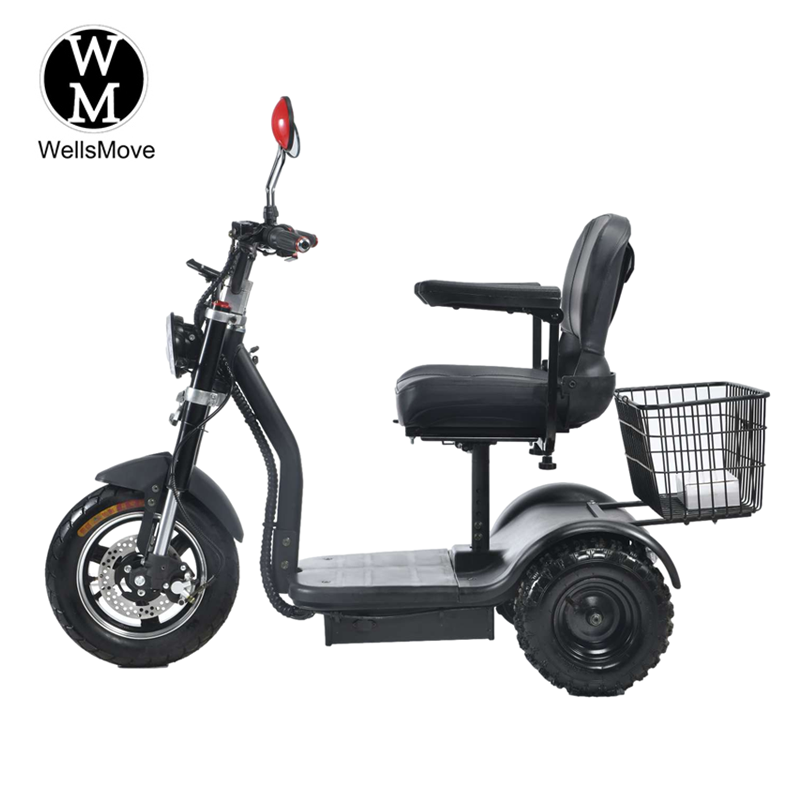Supermarket Shopping: Practical Use Cases for Senior Mobility Scooters
For many seniors, the weekly grocery run is not only a necessary way to stock up on groceries but also a crucial opportunity to get out of the house and connect with society. However, the long commute from home to the supermarket, the long aisles, the heavy bags… these seemingly mundane details can become shopping headaches for seniors. A thoughtfully designed mobility scooter for seniors is quietly changing all of this, transforming supermarket shopping from a burden to a pleasure. Today, we’ll delve into the practical value of mobility scooters in supermarkets and see how they empower the daily lives of seniors.
1. Solving the “First Hurdle of Travel”: Saying Goodbye to Distance Anxiety from Home to the Supermarket
Many elderly communities are located some distance from large supermarkets, requiring a 20-30 minute walk. Travel is even more challenging in windy, rainy, or scorching weather. In the past, elderly people either relied on their children to pick them up (constrained by their time) or squeezed into public transportation (inconvenient boarding and alighting, and crowded during rush hour). Over time, many elderly people reduced their shopping frequency or even resorted to making do.
The emergence of mobility scooters for seniors has first broken the “distance barrier.” For example, mainstream short-distance mobility scooters on the market typically have a range of 30-50 kilometers, more than enough for a round-trip from home to the supermarket. Some models also support fast charging, allowing a 1-2 hour charge during a lunch break to replenish most of the battery, eliminating the worry of running out of juice mid-trip. More importantly, their operation is extremely easy—most feature a rotary gear knob (forward/reverse/park) and a large LCD instrument panel (clearly displaying battery level and speed). Controls are easily controlled with just two hands on the steering wheel, allowing even elderly individuals unfamiliar with electronics to learn basic operation in under 10 minutes.
2, “Free Movement” in the Supermarket: Addressing the Core Pain Points of “Walking Tired and Carrying Too Much”
Seniors face two key issues when entering a supermarket: First, leg soreness from prolonged walking, especially in large supermarkets, where a single walk from the fresh produce section to the daily necessities section can take at least an hour. Second, when shopping for too many items, their bags or shopping baskets can become a burden, potentially leading to back injuries from improper use.
Mobility scooters for seniors are precisely designed to address these pain points:
Flexible control to adapt to the supermarket environment: Most models feature a “short turning radius,” allowing them to easily turn and reverse even in narrow aisles (approximately 1.2 meters wide) between shelves without hitting shelves or other customers. Furthermore, the adjustable speed (maximum approximately 6 kilometers per hour) allows seniors to adjust their pace and stop to rest whenever they feel tired, eliminating the need to find a rest seat. Built-in storage, hands-free: Some mobility scooters have large storage baskets under the seats, large enough to hold three to four grocery bags. Other models feature detachable shopping baskets, allowing customers to place their purchases directly into the basket, eliminating the need to carry them. Grandpa Li, who lives in Shanghai, said, “I used to feel heavy when I bought two cartons of milk or a bag of rice. Now, I can put everything in the scooter’s storage basket, leaving my hands free, and shopping is as easy as taking a stroll.”
Comfortable seats, reducing fatigue: High-quality mobility scooters feature high-resilience sponge seats that conform to the body curves of seniors. They also feature backrests and armrests, ensuring comfortable riding even after extended periods. Some models also feature armrest adjustment buttons on the side of the seats, allowing seniors to lift the armrests for easier entry and exit.
3. Detailed Design: These Features Make Supermarket Shopping More Secure
Beyond the core functions of transportation and storage, several details on mobility scooters further demonstrate care for seniors, making supermarket shopping more secure:
Non-slip tires for wet surfaces: Supermarket fresh produce areas often have water stains on the floor, making ordinary shoes prone to slipping. However, the tires on mobility scooters are mostly made of non-slip rubber with deep treads, which effectively increases friction and ensures smooth operation even on wet surfaces, preventing accidental falls.
Sensitive Braking, One-Touch Stop: Designed with seniors’ quick reactions in mind, mobility scooters feature highly sensitive braking systems. A simple press of the brake pedal brings the vehicle to a stop instantly. Some models even support dual braking with a handbrake and footbrake. Once parked, applying the handbrake prevents the vehicle from sliding, even on slopes like the small ramp at the supermarket entrance. No more worrying about the vehicle rolling away.
Nighttime lighting for dimly lit environments: Some supermarkets have underground parking lots or corner areas with low lighting. The front LED lights on mobility scooters come in handy. When turned on, they illuminate the road 3-5 meters ahead, allowing seniors to see the road clearly even in dim conditions and avoid hitting obstacles.
Battery level warnings to avoid power outage anxiety: The battery level display on the dashboard is not only clear, but also emits a beeping reminder when the battery drops below 20%, letting seniors know they need to charge immediately. This helps them avoid being stuck at home after shopping due to low battery.
4. Purchasing Tips: Choose the Right Mobility Scooter for Your Elderly Based on Your Grocery Needs
If your elderly family members frequently drive to the supermarket, consider the following three key aspects when choosing a mobility scooter:
Prioritize “Short-Distance Range + Flexible Dimensions”: Grocery trips are often short, so a range of 30 kilometers or more is sufficient; there’s no need to pursue excessive range (a higher range also means a heavier vehicle, making it more difficult to maneuver). A width of 60-70 cm is recommended for easy navigation through supermarket aisles.
Emphasis on “Storage Capacity”: If your elderly family members frequently purchase large quantities, consider a dual-storage design featuring an underseat storage basket and a removable shopping basket to ensure they can fit everything. The basket should ideally have a weight capacity of at least 10 kg to accommodate heavier items like rice and cooking oil.
Look for “Safety Certification”: Be sure to choose a reputable brand that has passed the national 3C certification. Check the braking system, tire anti-skid performance, and battery warning function for proper function. Avoid purchasing products without these certifications to ensure the safety of the elderly.
Conclusion: Senior mobility scooters are more than just a means of transportation; they also represent a means of autonomy.
When we talk about senior mobility scooters, they aren’t just a tool to help seniors get around; they also embody the desire for “independent living.” For seniors who enjoy shopping, a practical mobility scooter means they no longer need to rely on others and can decide for themselves what to buy and when to go. This sense of control over their lives is far more meaningful than simply convenience.
If your parents or older relatives often struggle with grocery shopping, consider choosing a suitable senior mobility scooter to make their shopping trips easier and less stressful.
Post time: Oct-08-2025



